In the depths of space
The next step up from a DSLR is a cooled CCD camera. Experts use monochrome cameras together with colour filters.
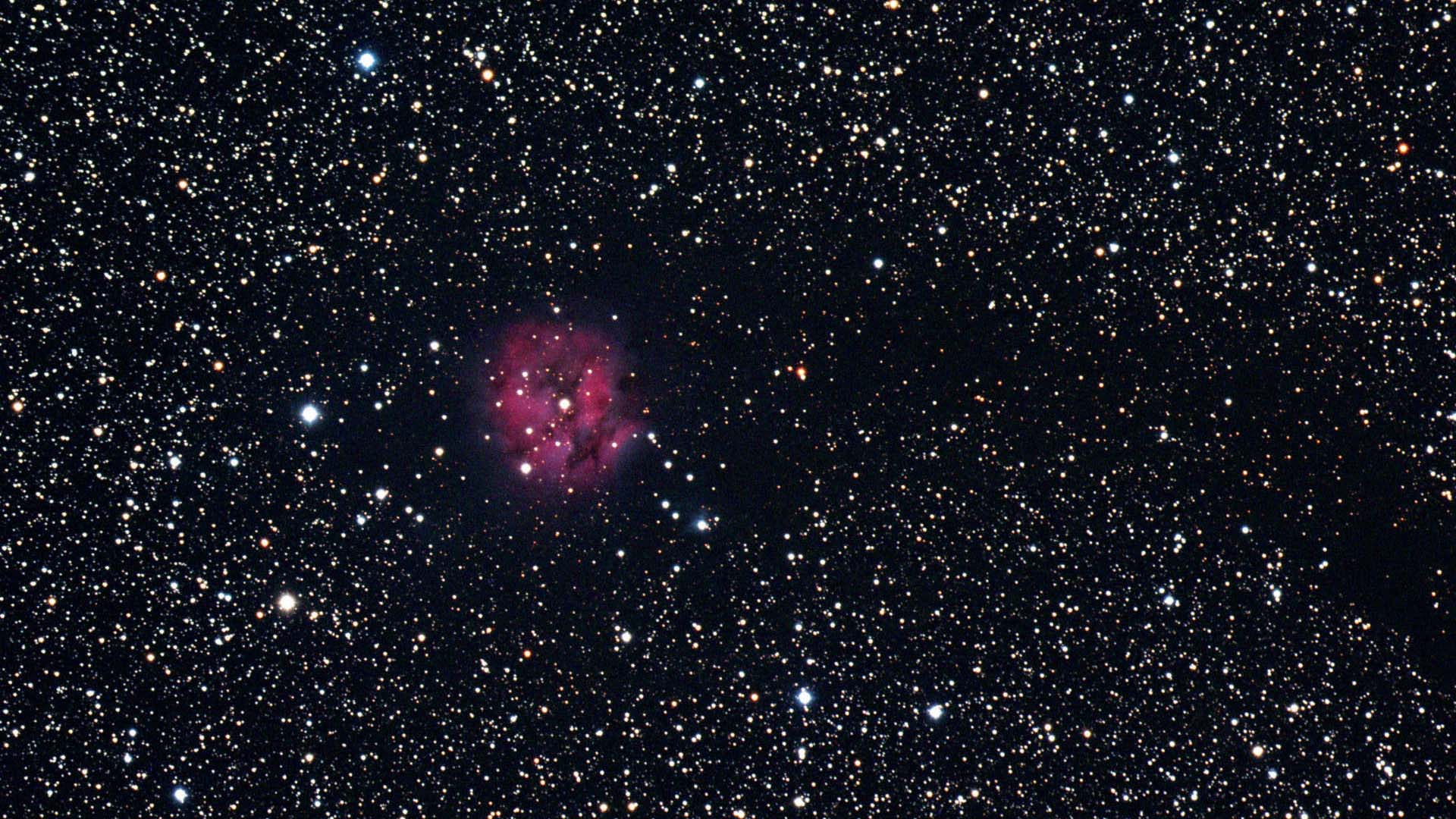 Picture of the Cocoon Nebula (IC5146) in the constellation Cygnus and its formation: the picture is a combination of individual composite images in each of the colour channels to form a colour picture. U. Dittler
Picture of the Cocoon Nebula (IC5146) in the constellation Cygnus and its formation: the picture is a combination of individual composite images in each of the colour channels to form a colour picture. U. DittlerDeep sky photography with a cooled CCD camera
Although there are astrophotographers who use uncooled DSLRs to create very impressive deep sky pictures, most committed astrophotographers will use cooled CCD cameras to avoid the negative characteristics of DSLRs, such as the adverse signal-to-noise ratio. With a little practice you can take some spectacular pictures.
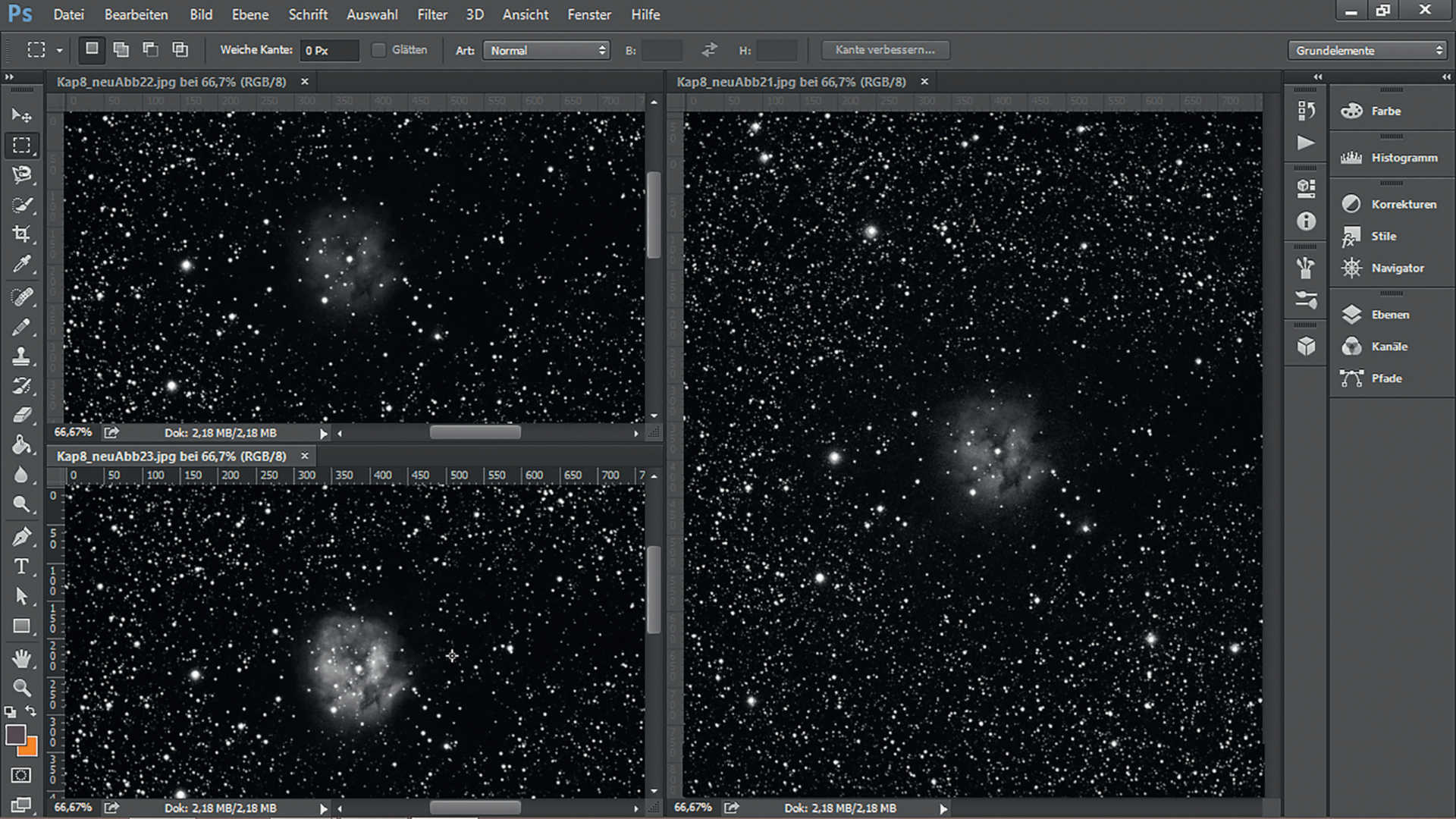 Picture of the Cocoon Nebula (IC5146) in the constellation Cygnus and its formation: the composite image of eight single images, each taken with red, green and blue filters, was aligned, stacked and contrast-enhanced. SBIG STF-8300 camera on a 200/600 mm astrograph, total exposure time: 72 minutes, RGB filter. U. Dittler
Picture of the Cocoon Nebula (IC5146) in the constellation Cygnus and its formation: the composite image of eight single images, each taken with red, green and blue filters, was aligned, stacked and contrast-enhanced. SBIG STF-8300 camera on a 200/600 mm astrograph, total exposure time: 72 minutes, RGB filter. U. Dittler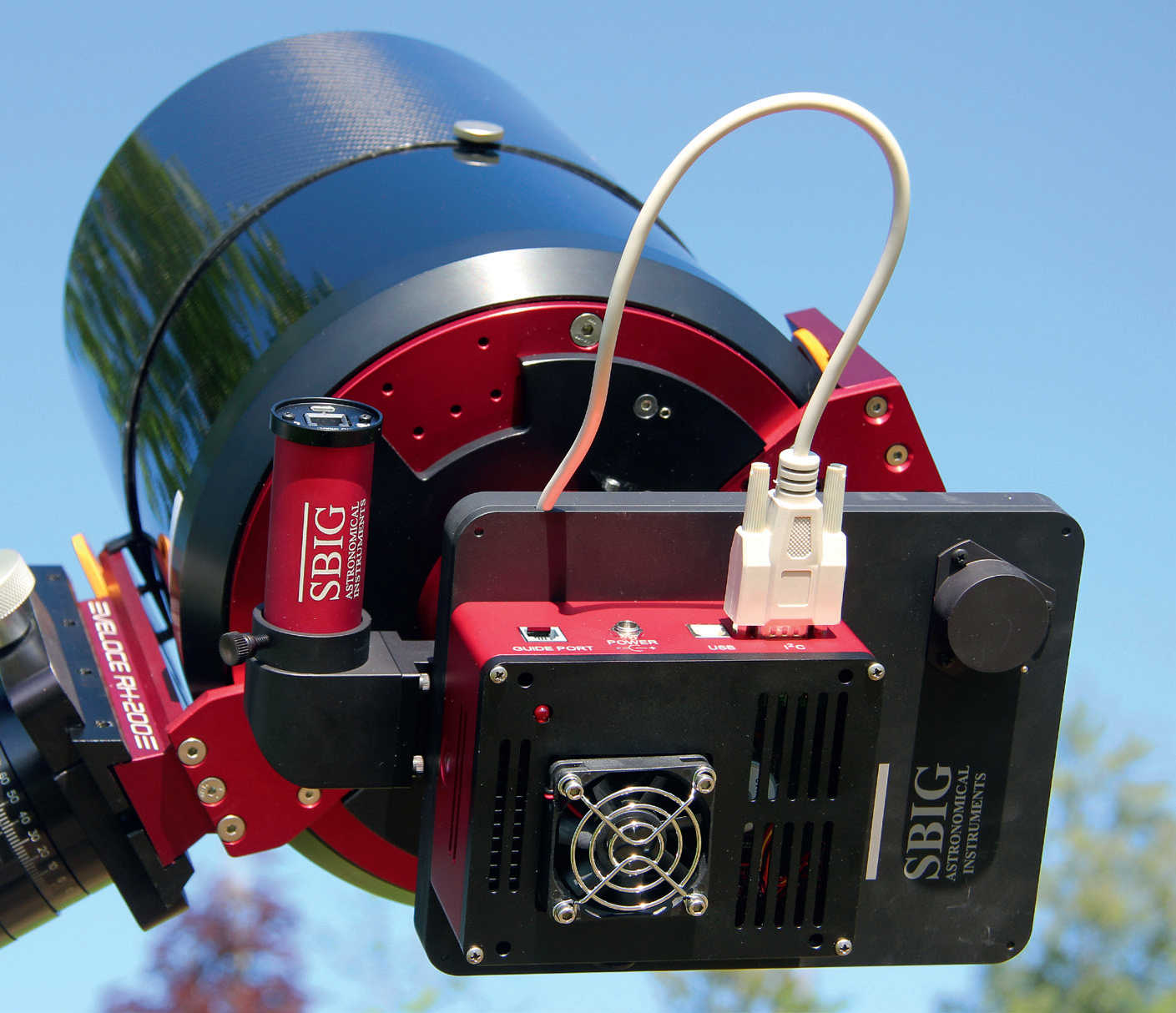 A cooled CCD camera on an astrograph: the black filter wheel can be seen between the telescope and the red/black camera, and a round red autoguider can be seen next to it, which is connected to the telescope's light path using an off-axis guider. U. Dittler
A cooled CCD camera on an astrograph: the black filter wheel can be seen between the telescope and the red/black camera, and a round red autoguider can be seen next to it, which is connected to the telescope's light path using an off-axis guider. U. DittlerA smaller step from a digital SLR camera in the direction of a cooled CCD camera would be to choose one with a colour-sensitive chip: the advantages of DSLR - the creation of a colour picture with just one exposure - are retained, while the disadvantages - the noise of an uncooled camera - are avoided. However, many deep-sky photographers prefer to use a cooled CCD camera with a monochrome sensor, as these are considerably more versatile – and generally the monochrome chips are also more sensitive than colour sensors.
Comparison pictures of the Horsehead Nebula (Barnard 33, IC434) with three different Hα filters, each with a different narrow bandpass:
The images all have the same exposure time and have been identically processed. It can be clearly seen that as the half width decreases, an increasingly large part of the (continuous) starlight is blocked. Unfortunately, with an ever narrower bandpass, the production specifications for such filters increase - and with them also the price.
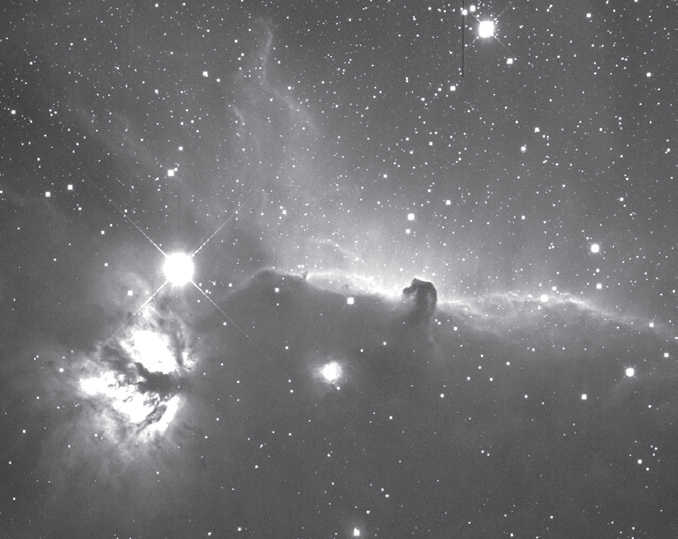 Hα filter with 35 nm bandpass U Dittler
Hα filter with 35 nm bandpass U Dittler 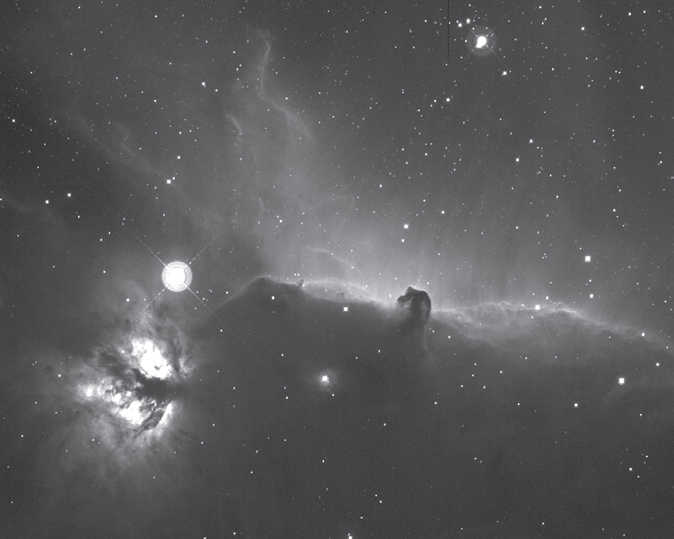 Hα filter with 7 nm bandpass U Dittler
Hα filter with 7 nm bandpass U Dittler 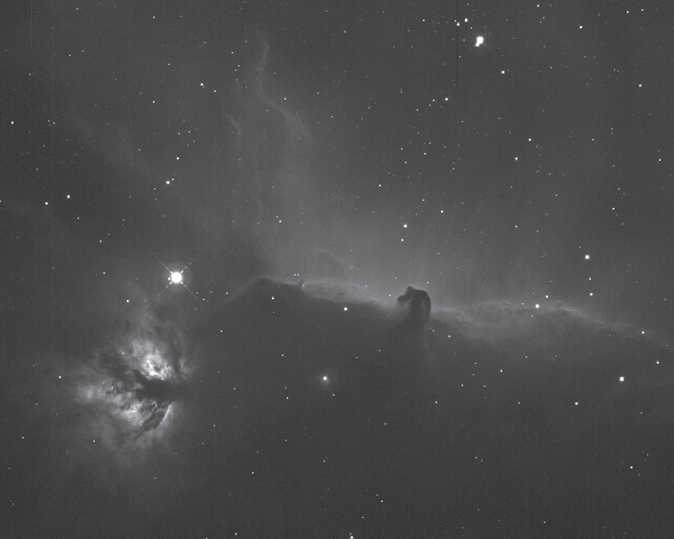 Hα filter with 3.5 nm bandpass U Dittler
Hα filter with 3.5 nm bandpass U Dittler The focal length depends on the object
Monochrome chips require (at least) three images to be taken using appropriate red, green and blue filters to produce a colour image, but they also allow additional filters (such as narrowband and line filters) to be used. This requires the ability to change the filter: either with a filter slider or a motor-driven filter wheel controlled by the imaging software.
Dedicated deep-sky photographers who specialise, for example, in binary stars or planetary nebulae, will be guided by their individual requirements when choosing their telescope: for these very small celestial objects, focal lengths from 2,000 mm to 3,000 mm are likely to be most useful. Optimised telescopes in a Ritchey-Chrétien or Cassegrain design are available for the photography of such objects. Telescopes with shorter focal lengths, often only between 500 mm and 1,500 mm, are used for the photography of faint nebulae. For these objects, a telescope with a short focal length, high light-gathering power and a large aperture is ideal. These telescopes are capable of illuminating image fields of (at least) the size of a full-frame chip. There are numerous specialised types of astrograph with large apertures and corresponding image fields which can cost as much as a small car.
A really stable mount on a suitable tripod or pier and a reliable autoguider are essential for serious deep sky photography. Nothing is as disappointing at the end of a long clear night as realising that the stars did not turn out point-shaped during the long exposure time: either because the mount did not run smoothly, was not exactly aligned or was not stable enough to withstand the occasional gust of wind.
In detail
Filters and their use
Hα filter
Many emission nebulae only truly reveal their structure when using a Hα filter. These filters help to block light from large parts of the spectrum, so that the nebula’s faint Hα-emission becomes more visible at 656nm and with higher contrast. The effect of such filters depends on the size of the bandpass: the narrower the filter’s bandpass (and the more precisely it is designed for a specific wavelength), the greater the observable effect can be.
OIII filter
This filter is very useful for photographing most planetary nebulae and supernovae remnants, as it reduces the brightness of starlight by 2 magnitudes and significantly increases the contrast between the nebula and the background. In addition, the edges of the frame often contain more detail than in photography without the filter. The spectral lines of doubly ionised oxygen are 496 nm and 501 nm, so common OIII filters typically have a bandpass of 6 to 12 nm in the range of 494 nm to 506 nm.
SII filter
This filter, which also transmits red spectral lines, is also suitable for the photography of emission nebulae. Combined with OIII and Hα filters, SII filters are traditionally used to create false colour images of nebulae. Singly ionised sulphur has a wavelength of 672 nm, common SII filters typically have a bandpass of 6 to 12 nm around this line.
Hβ filter
Unlike Hα filters, Hβ filters transmit light at the blue end of the spectrum. They are suitable for the photography of some emission nebulae, since not all such nebulae emit much light in the OIII range. Some Hβ filters are therefore better suited for creating false colour images. The hydrogen beta line has a wavelength of 486 nm; common Hβ filters typically have a bandpass of 8 to 12 nm around this line.
Filters in CCD photography
In order to be able to make colour images with cooled, monochrome CCD cameras, as mentioned above, the use of colour and/or narrow band filters is essential: a classic set of red, green and blue filters is usually the starting point for creating coloured images of celestial objects. However, in order to make out specific details of certain celestial objects, different narrow band or line filters can be used (see table). During subsequent processing, the images taken using the various filters can be assigned to the individual colour channels of a picture, so that the various monochrome images at particular wavelengths result in a bright, coloured image. Since exposure times of several hours are not uncommon in deep sky photography, you should always take some binoculars with you to take a stroll around the starry sky, while your camera attached to the telescope works through the series of exposures.
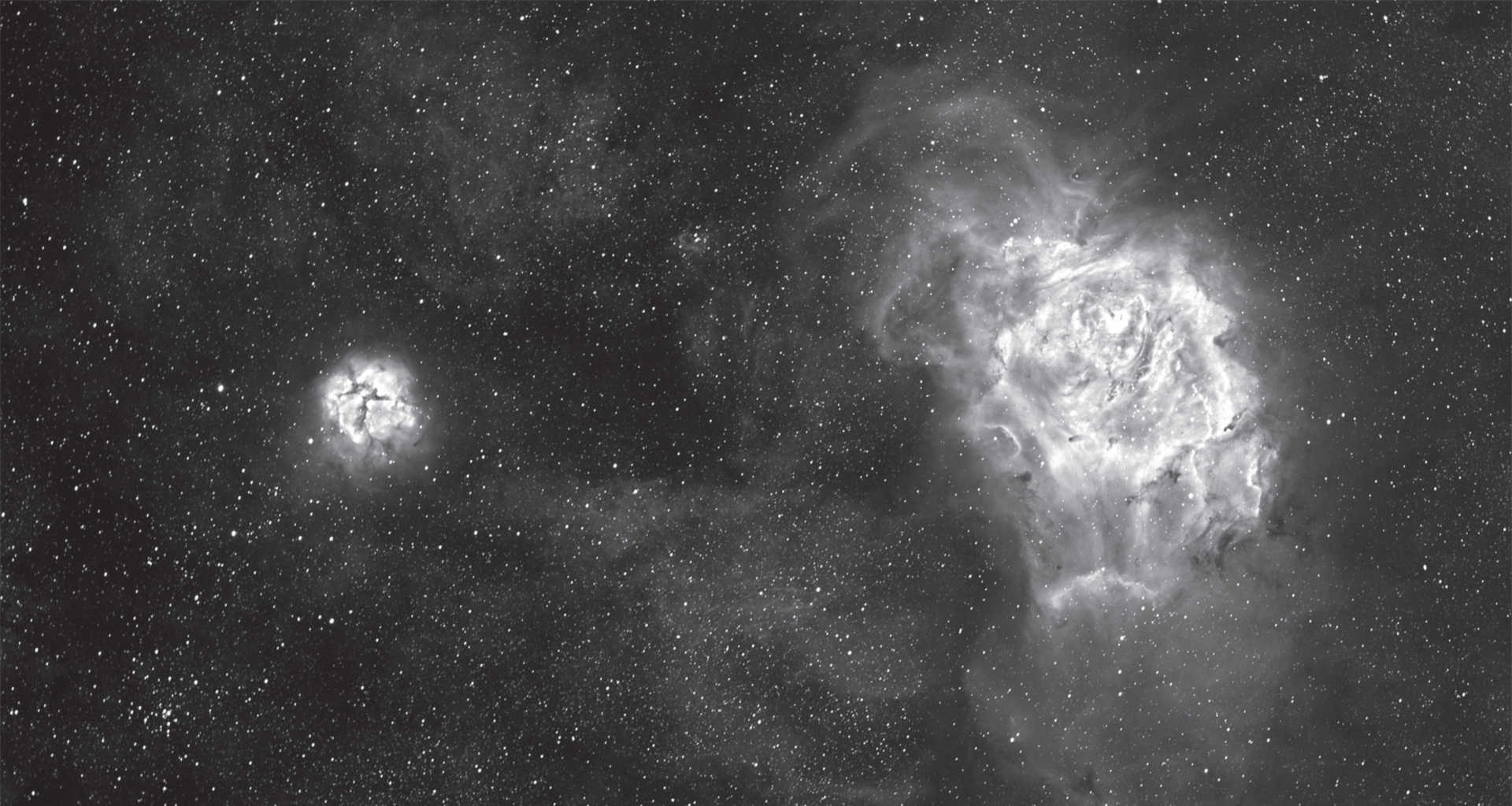 The Lagoon Nebula and the Trifid Nebula (M 8 and M 20) in the constellation of Sagittarius. Composite picture of six images with an exposure time of 1 minute each, six with an exposure time of 15 minutes each and two with an exposure time of 60 minutes each. Camera:SBIG STF-8300, Hα filter with 35 nm bandpass, telescope: 130 mm refractor with 1,000 mm focal length. U. Dittler
The Lagoon Nebula and the Trifid Nebula (M 8 and M 20) in the constellation of Sagittarius. Composite picture of six images with an exposure time of 1 minute each, six with an exposure time of 15 minutes each and two with an exposure time of 60 minutes each. Camera:SBIG STF-8300, Hα filter with 35 nm bandpass, telescope: 130 mm refractor with 1,000 mm focal length. U. DittlerAuthor: Ullrich Dittler / Licence: Oculum-Verlag GmbH
